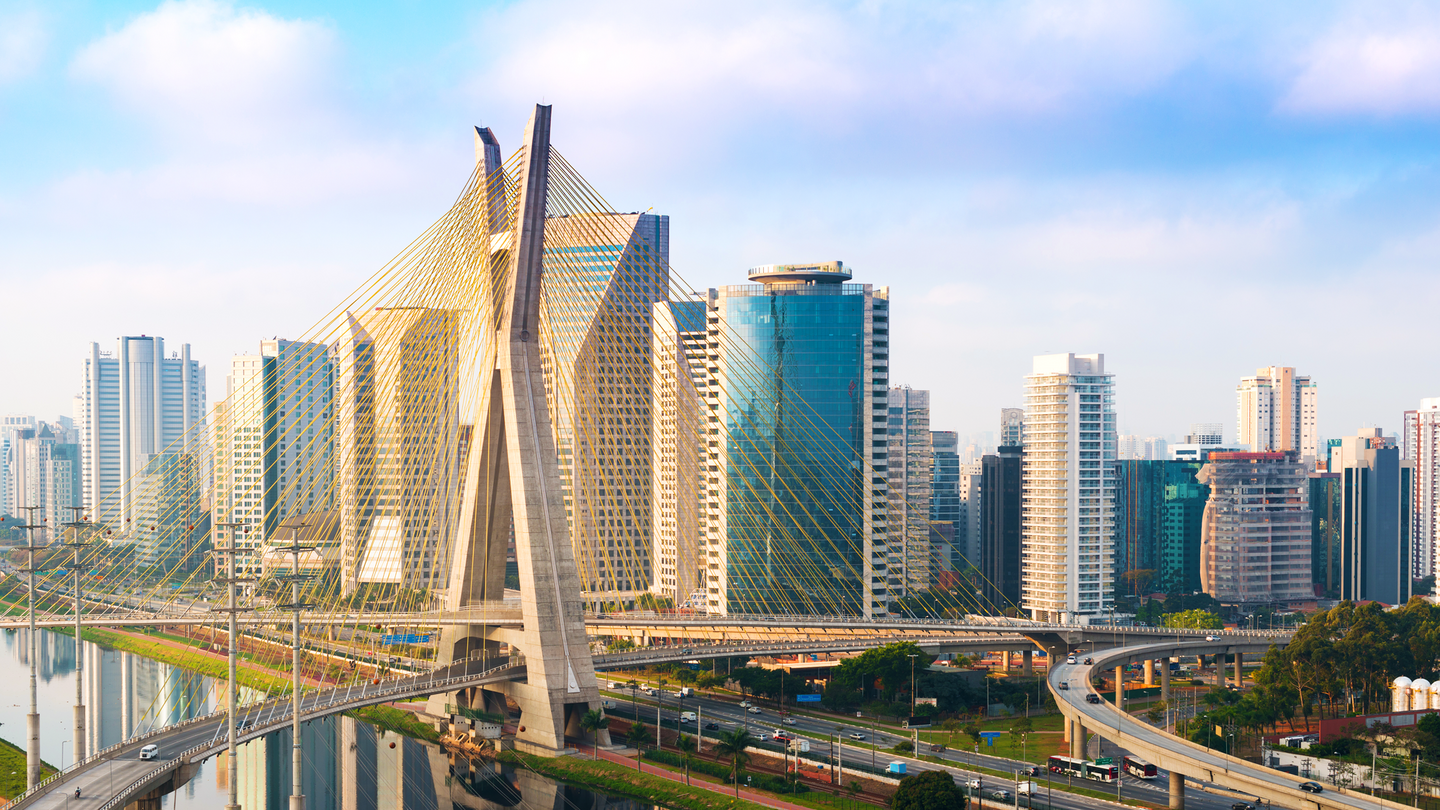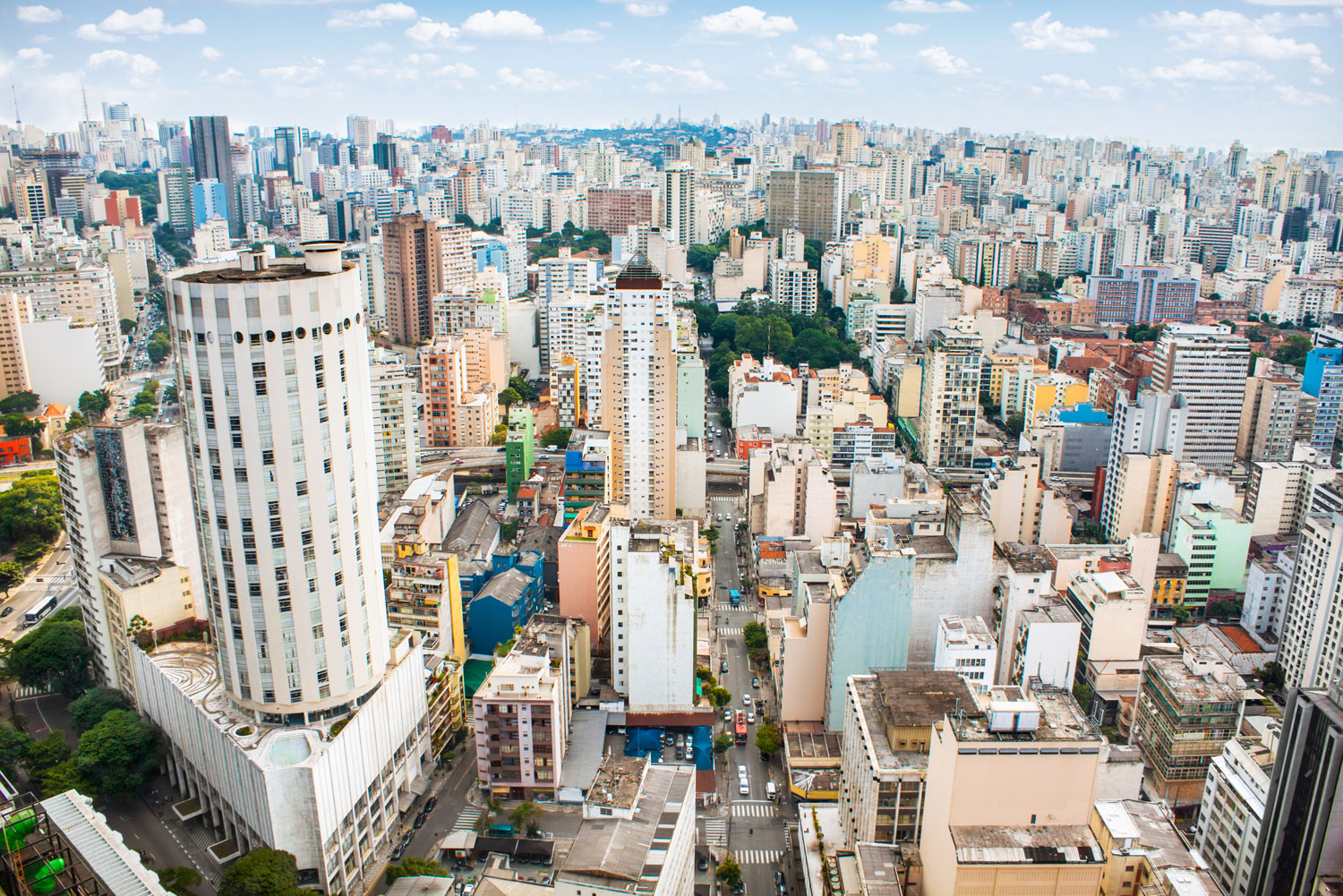Sao Paulo: A Vibrant Metropolis

Sao Paulo, the bustling metropolis of Brazil, stands as a testament to the country’s dynamic history and its ambition to become a global power. From its humble beginnings as a small settlement to its current status as one of the most influential cities in the world, Sao Paulo’s journey is a fascinating story of growth, innovation, and cultural fusion.
Sao Paulo’s Historical Tapestry
Sao Paulo’s history is intricately woven with the narratives of European colonization, indigenous communities, and the influx of immigrants from across the globe. Founded in 1554 by Portuguese Jesuit priests, the city was initially a small village known as “Piratininga.” The Jesuit missionaries established a mission to convert the indigenous population to Christianity, and the village gradually grew as a center for trade and agriculture.
In the 19th century, Sao Paulo experienced a surge in economic growth due to the discovery of coffee plantations in the surrounding region. This led to a rapid influx of immigrants from Europe, primarily from Italy, Portugal, and Germany, who sought opportunities in the thriving coffee industry. This period saw the establishment of numerous coffee farms, factories, and industries, transforming Sao Paulo into a major economic hub.
The early 20th century witnessed the rise of Sao Paulo as a center of industrialization and modernization. The city’s infrastructure developed rapidly, with the construction of railroads, power plants, and modern buildings. The influx of immigrants continued, adding to the city’s cultural diversity and its growing workforce.
Cultural Fusion: A Mosaic of Influences, Sao paulo brazil
Sao Paulo’s cultural landscape is a vibrant tapestry of diverse influences. The city’s history as a melting pot of immigrants from various parts of the world has resulted in a unique blend of traditions, languages, and culinary delights.
The city’s cultural scene is rich with museums, theaters, art galleries, and music venues that showcase a wide range of artistic expressions. From the iconic Pinacoteca de São Paulo, housing a vast collection of Brazilian art, to the Museu de Arte Moderna (MAM), showcasing contemporary art, Sao Paulo offers a diverse range of cultural experiences.
Sao Paulo’s culinary scene is a testament to its multicultural heritage. From traditional Brazilian dishes like feijoada and pão de queijo to international cuisines from around the world, the city offers a wide array of culinary delights. The city’s vibrant street food culture is also a major attraction, with vendors offering a variety of snacks and meals, from pastel (fried pastries) to coxinha (chicken croquettes).
Sao Paulo: Brazil’s Economic and Financial Powerhouse
Sao Paulo’s economic prowess is undeniable, making it the financial and industrial heart of Brazil. The city is home to major financial institutions, corporations, and industries that drive the country’s economic growth. The city’s stock exchange, B3, is the largest in Latin America and one of the most important financial markets in the world.
Sao Paulo’s industrial sector is highly diversified, encompassing a wide range of industries, including automotive manufacturing, aerospace, pharmaceuticals, textiles, and food processing. The city is also a major center for technology and innovation, with a thriving startup ecosystem and a growing number of tech companies.
Key Industries and Their Contributions
| Industry | Contribution |
|---|---|
| Automotive Manufacturing | Sao Paulo is home to major car manufacturers such as Volkswagen, General Motors, and Ford, contributing significantly to the city’s economy. |
| Aerospace | The city is a major center for aerospace research and development, with companies like Embraer and Boeing having significant operations in Sao Paulo. |
| Pharmaceuticals | Sao Paulo is a hub for pharmaceutical production, with major companies like Pfizer, Novartis, and Roche having facilities in the city. |
| Textiles | Sao Paulo has a long history of textile production, with numerous factories and companies producing a wide range of textile products. |
| Food Processing | The city is a major center for food processing, with companies producing a wide range of food products, including coffee, sugar, and processed foods. |
Exploring Sao Paulo’s Landmarks and Attractions: Sao Paulo Brazil

Sao Paulo is a city brimming with cultural and historical treasures, offering a diverse range of landmarks and attractions for every visitor. From sprawling parks to iconic architecture and vibrant art scenes, the city presents a captivating blend of modern and traditional experiences.
A Week-Long Itinerary in Sao Paulo
A week-long visit to Sao Paulo allows ample time to explore its diverse attractions. Here’s a suggested itinerary that balances iconic landmarks with cultural immersion:
- Day 1: Begin your journey with a visit to Ibirapuera Park, a sprawling green oasis in the heart of the city. Explore its gardens, museums, and art installations, and enjoy a leisurely picnic or a stroll along its scenic paths.
- Day 2: Immerse yourself in art and history at the Pinacoteca de São Paulo, a renowned art museum showcasing a vast collection of Brazilian art from the 19th and 20th centuries. Afterwards, delve into the city’s immigrant past at the Museum of Immigration, exploring the stories of those who shaped Sao Paulo’s cultural landscape.
- Day 3: Discover the vibrant Liberdade neighborhood, known for its Japanese heritage and bustling markets. Explore the shops, restaurants, and temples, and enjoy a traditional Japanese meal.
- Day 4: Take a guided tour of the historic center, admiring the architectural marvels of the city’s past. Explore the Municipal Theater, the Patriarchal Basilica, and the Sao Paulo Stock Exchange, each representing different eras and styles of architecture.
- Day 5: Immerse yourself in the city’s contemporary art scene by visiting the Museu de Arte Moderna de São Paulo (MAM), showcasing modern and contemporary art from Brazil and around the world. In the evening, experience the city’s vibrant nightlife by exploring the bars and clubs of the Vila Madalena neighborhood.
- Day 6: Venture beyond the city center to explore the Parque do Ibirapuera, a sprawling green space offering a variety of activities, including biking, jogging, and picnicking. In the evening, enjoy a traditional Brazilian dinner at a restaurant in the Pinheiros neighborhood, known for its diverse culinary scene.
- Day 7: Indulge in a final day of shopping and dining in the upscale Jardins neighborhood. Explore the boutiques, art galleries, and gourmet restaurants, and savor the flavors of Sao Paulo’s culinary scene.
Architectural Styles and Historical Significance
Sao Paulo’s architectural landscape is a captivating tapestry of styles, reflecting the city’s rich history and diverse influences.
- Art Deco: This style, characterized by geometric patterns, streamlined forms, and decorative elements, is evident in buildings like the Municipal Theater, designed by Ramos de Azevedo. This iconic landmark, built in 1911, exemplifies the grandeur and elegance of the era.
- Neoclassical: The Patriarchal Basilica, a prominent religious landmark, showcases Neoclassical architecture with its symmetrical facade, columns, and dome. Completed in 1910, it embodies the influence of European architectural traditions on the city’s development.
- Modernist: The Sao Paulo Stock Exchange, designed by renowned architect Rino Levi, represents the modernist movement of the 1930s and 1940s. Its clean lines, functional design, and use of concrete and glass reflect the era’s emphasis on functionality and simplicity.
- Contemporary: Sao Paulo’s skyline is punctuated by contemporary skyscrapers, reflecting the city’s dynamic and evolving architectural landscape. Buildings like the Faria Lima Tower and the Itaú Unibanco Building showcase innovative design and cutting-edge technology.
Cultural and Artistic Scene
Sao Paulo boasts a thriving cultural and artistic scene, offering a diverse range of museums, theaters, and music venues.
- Museums: Beyond the Pinacoteca and the MAM, Sao Paulo is home to numerous museums showcasing a wide range of art and history. The Museu de Arte Sacra houses a collection of religious art, while the Museu do Futebol celebrates the history of Brazilian football. The Museu Catavento offers an interactive and educational experience for all ages, exploring science and technology.
- Theaters: Sao Paulo’s theater scene is vibrant and diverse, ranging from traditional plays to contemporary performances. The Municipal Theater, with its grand architecture and acoustics, hosts a variety of performances, while the Teatro Oficina is known for its experimental and innovative productions.
- Music Venues: The city is a hub for music lovers, offering a wide range of venues catering to diverse musical tastes. The Audio Club is a popular venue for electronic music, while the Citibank Hall hosts concerts by international and national artists. The Sesc Pompeia is a cultural center that hosts a variety of musical performances, from classical to jazz.
Local Markets and Street Food
Sao Paulo is a foodie’s paradise, offering a diverse range of local markets and street food experiences.
- Mercados Municipais: Sao Paulo is home to numerous municipal markets, offering a vibrant and authentic glimpse into the city’s culinary culture. The Mercado Municipal, known as “Mercadão,” is a bustling market offering fresh produce, seafood, and traditional Brazilian delicacies. The Mercado da Sé, located near the historic center, is another popular market known for its fresh fruits, vegetables, and artisanal products.
- Street Food: Sao Paulo’s street food scene is renowned for its diversity and affordability. Coxinha, a fried dough filled with chicken, is a popular snack, while pastel, a fried pastry filled with various ingredients, is another favorite. Esfiha, a savory pastry with Middle Eastern origins, is also widely available, offering a range of fillings. For a sweet treat, try brigadeiro, a chocolate fudge ball, or beijinho, a coconut candy.
Sao paulo brazil – Sao Paulo, a vibrant metropolis in Brazil, pulsates with a dynamic energy that mirrors the political landscape of many nations. From the bustling streets to the lively discussions in cafes, the city reflects the global conversations about leadership and change.
This energy is mirrored in the intense scrutiny of presidential debates around the world, where candidates grapple with crucial issues that impact the lives of millions. In Sao Paulo, the echoes of these debates reverberate through the city’s diverse communities, inspiring conversations and fostering a sense of civic engagement.
São Paulo, Brazil, a vibrant metropolis, faces challenges like any other major city. But amidst the urban sprawl, there are leaders like Mayor Tiffany Henyard , who are making a difference. Her dedication to community development inspires us all to seek out solutions that can improve life in São Paulo and beyond.
